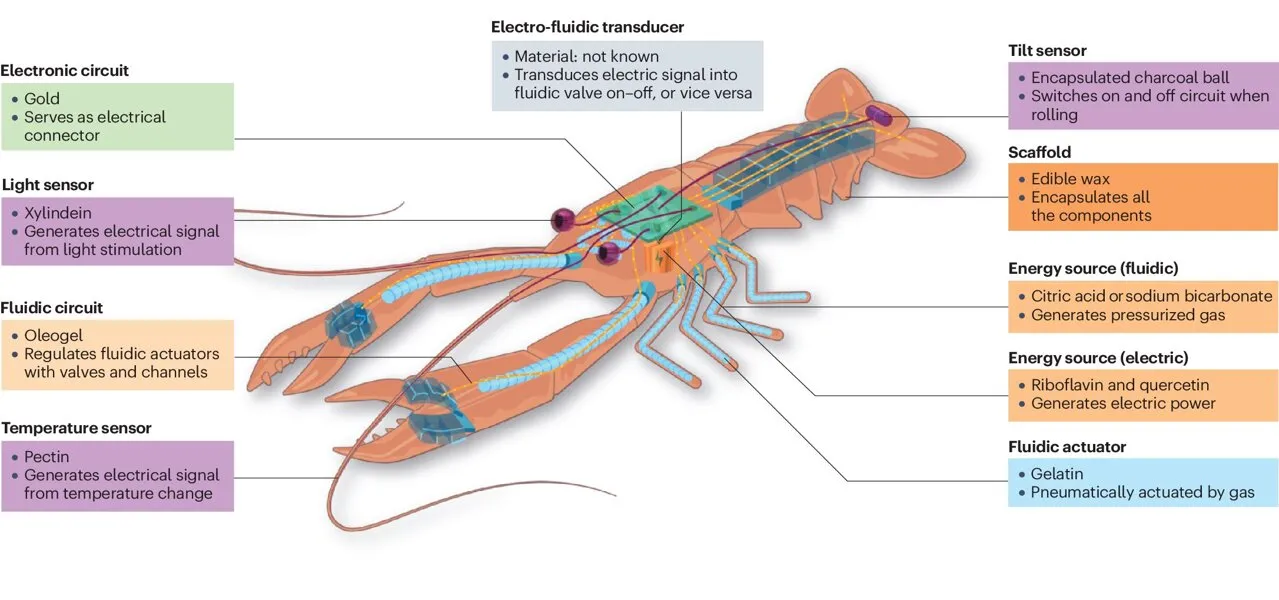Eating robots? It will soon be possible
Follow us on Google News (click on ☆)

Representation of a future edible robot.
Credit: Nature Reviews Materials (2024).
Historically, robotics and food existed in distinct worlds: one metallic and rigid, the other organic and biodegradable. However, recent advancements are opening new horizons: reduction of electronic waste, nutrition and drug delivery, health monitoring, and unprecedented culinary experiences.
What barriers need to be overcome to see these robots on our plates? Dario Floreano, director of the Laboratory of Intelligent Systems at EPFL, and his colleagues from the RoboFood project explore this question in an article in Nature Reviews Materials. Floreano, along with experts from various European institutions, studies edible ingredients capable of replacing traditional robotic components.
Scientists are seeking edible materials with properties similar to non-edible materials. Gelatin can replace rubber, rice cakes simulate foam, and chocolate films protect robots in humid environments. Other combinations, like starch mixed with tannin, imitate commercial adhesives.
Edible robotic components such as actuators, sensors, and batteries are already under study. In 2017, EPFL developed a gelatin gripper capable of grabbing an apple. More recently, a conductive ink was created to monitor food growth, using activated charcoal and gummy candies.
In 2023, researchers designed the first edible rechargeable battery using riboflavin and quercetin, with activated charcoal facilitating electron transport and nori algae preventing short circuits. Although this edible battery can power an LED for ten minutes, many challenges remain in creating fully edible robots.
Drones with rice cake wings and partially edible rolling robots have been developed, but assembling electrical components and fluidic actuators remains complex. Researchers still need to miniaturize these robots, increase their shelf life, and... improve their taste.